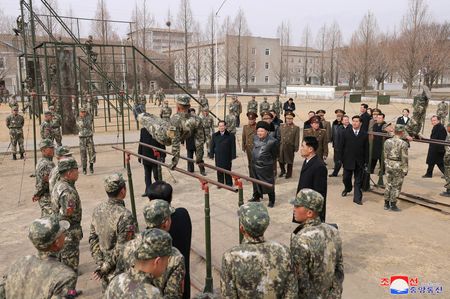By Jay Ereno
SAN ANTONIO, Philippines (Reuters) – U.S. and Philippine soldiers shot down drones with Stinger missiles during live-fire drills on Sunday, part of annual joint military exercises taking place at a time of simmering tensions with Beijing over the South China Sea.
More than 14,000 Filipino and U.S. troops are participating in this year’s Balikatan, or “shoulder-to-shoulder”, exercises, which run until May 9, focusing on a “full battle test” between the two defence treaty allies in response to regional security concerns. China has criticised the drills as provocative.
Sunday’s drills were held in the western Philippines province of Zambales that faces the South China Sea, a flashpoint between China and Southeast Asian nations.
Ties between Beijing and Manila are their worst in years amid frequent confrontations in the disputed waterway that have sparked concerns of a military conflict.
Chinese state broadcaster CCTV said last week the country’s coastguard had conducted maritime control operations at Sandy Cay, which China calls the Tiexian Reef, exercising sovereignty jurisdiction, and the Philippines on Sunday conducted a maritime operation in the area, observing the “illegal presence” of Chinese coastguard and “maritime militia” vessels.
While the Philippine military has described this year’s drills as a rehearsal for national defence, it said the exercises were not directed at any country.
The integrated air and missile defence exercise in Zambales employed the Marine Air Defense Integrated System or MADIS, marking the system’s second live-fire test and its first deployment to the Philippines.
“This type of training is absolutely invaluable to us,” 3rd Marine Littoral Regiment Officer John Lehane told reporters after the exercise.
This year’s Balikatan also featured the debut of the NMESIS, the U.S. anti-ship missile system, which will be employed during maritime key terrain security operations in Northern Luzon and the Batanes Islands, near Taiwan.
(Writing by Karen Lema; Editing by Helen Popper)














